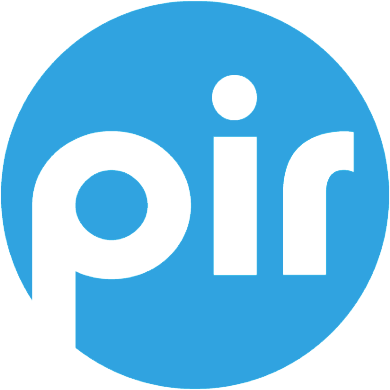By Jim LeFevre, Senior Director of Marketing, Public Interest Registry
Registry, registrar, registrant – though they are similar words, each has a very different meaning and role in the domain industry. We’ll be focusing on the role of a registry in this post, but don’t forget you can refresh your memory by taking a look at past entries in the Domain Industry Series on our blog.
What does it take to be a registry – a keeper of the TLD keys? A registry is an organization that manages and operates specific top-level domains (TLDs), such as .org, within the Domain Name System (DNS). Registries are a vital component in the internet community. They come in all shapes and sizes, and as a steward of a particular domain they are integral to that domain’s continued success and stable operation. To learn more about what makes a registry tick, read on!
Stewardship of a Domain
The two main responsibilities for a registry are to keep the DNS updated and to maintain inventory for the TLD. In other words, registries help manage the ins and outs of domain extensions, helping to set the tone of the extension, set any potential rules (is it an open or closed domain?) and ensure success by working closely with registrars to sell domain names. Registries also maintain a database of all registered domain names within their TLD(s) called the Zone File.
In the role of domain name steward, registries play a special role in helping to maintain a safe and secure operation of a TLD zone for their registrants and registrants’ stakeholders. Though different registries oversee unique aspects of the internet community, each one has the responsibility to ensure a stable secure operation of their TLDs.
The Many Hats of a Domain Registry
Some registries manage open TLDs, while others manage the validation process for closed domains. Some registries cater to local language or specific country-code top level domains (ccTLDs), and others specialize in the stewardship of new TLDs. All in all, there are many different hats a domain registry wears, small and large registry organizations, and many complex intricacies that make them unique.
Open versus closed domain – Open domains, like .org, are accessible to registrants from all walks of life. Alternatively, there are closed, or validated domains. This means a registry has put in place requirements limiting the eligibility to purchase a domain name in the TLD. In turn the registry has a bit more process to consider in the management of its domain, but in return, domain extensions registered are tailored to a certain community or type of user. This process can lend legitimacy to the domain names registered because of their certification as part of a community. The registry of the .edu domain, for example, verifies that only postsecondary institutions and organizations that are institutionally accredited by an agency on the U.S. Department of Education’s list of nationally recognized accrediting agencies receive the right to use .edu. Another example is .ngo/.ong domains as validated domains for nonprofits – also known as non-governmental organizations (NGOs). .ngo/.ong are exclusively available to nonprofit organizations that are genuine, lawful and independent NGOs and they must undergo a validation process.
Country and language-specific expertise – Some registries only steward ccTLDs. And while specific ccTLDs can be purchased through varying registrars, as outlined in the last post in our series, country-specific domains are often managed by specific registries, dedicated to that TLD only. Some of these registries not only manage their respective TLDs and operation of DNS servers, but also are vocal about the internationalized domain name (IDN) effort, which allows non-ASCII characters to be used in domain names. While some ccTLDs require registrants to have some nexus with the ccTLD’s country, some “vanity ccTLDs” are run as open TLDs and are commercially available and in demand outside of their intended country usage because the domain extension has inherent semantic meaning. For examples, Montenegro’s .me domain has become the most used ccTLD for personal or individual sites and the Federated States of Micronesia’s .fm is often used for FM and internet radio stations.
New TLDs –Since 2013, new gTLDs have been delegated and are offering domain names. These new gTLDs represented the first large delegation of new TLDs in an effort to increase market competition and choice for consumers. These registries aim to offer a diverse array of domains to help registrants differentiate themselves, and for consumers to better tell what kind of content they could expect on specific domains. By specializing in new gTLDs, a registry has the opportunity to steward new communities, enabling registrants to tell their story with a domain name that aligns to their organizations’ specific mission, whether that be represented by .dev as part of the developer community, or in support of a specific diet using .soy, and anything in between.
Public Interest Registry – Breaking the Registry Mold
Public Interest Registry (PIR) is a unique domain registry in that we’re a not-for-profit organization. We were created by the Internet Society (ISOC) to manage the .org domain, but more broadly are dedicated to ensuring all who are committed to the public interest have a voice online – a very similar mission to the .org domain of which we’ve managed for more than 15 years. In fact, every time someone chooses a .org domain, half of every dollar goes toward supporting ISOC and its mission to keep the internet free, open and to bring internet access to every corner of the globe. In our own advocacy work to promote collaboration, safety and security on the internet, PIR is also breaking the registry mold by making internet education a fundamental part of our mission.
PIR is also unique as it truly wears many hats, as discussed above. We manage both open (.org) and validated (.ngo/.ong) domains, as well as manage three IDNs including .ОРГ, .机构, and .संगठन , the Cyrillic, Chinese, and Hindi domains, respectively,
Thank you for taking the next step to becoming a domain industry insider. We hope you’ve learned something new and now understand the many complexities and considerations that go into stewardship of a domain. Keep up the industry education by taking a look at the final post in the Domain Insider’s Guide series – the “ICANN Edition” is up next.

